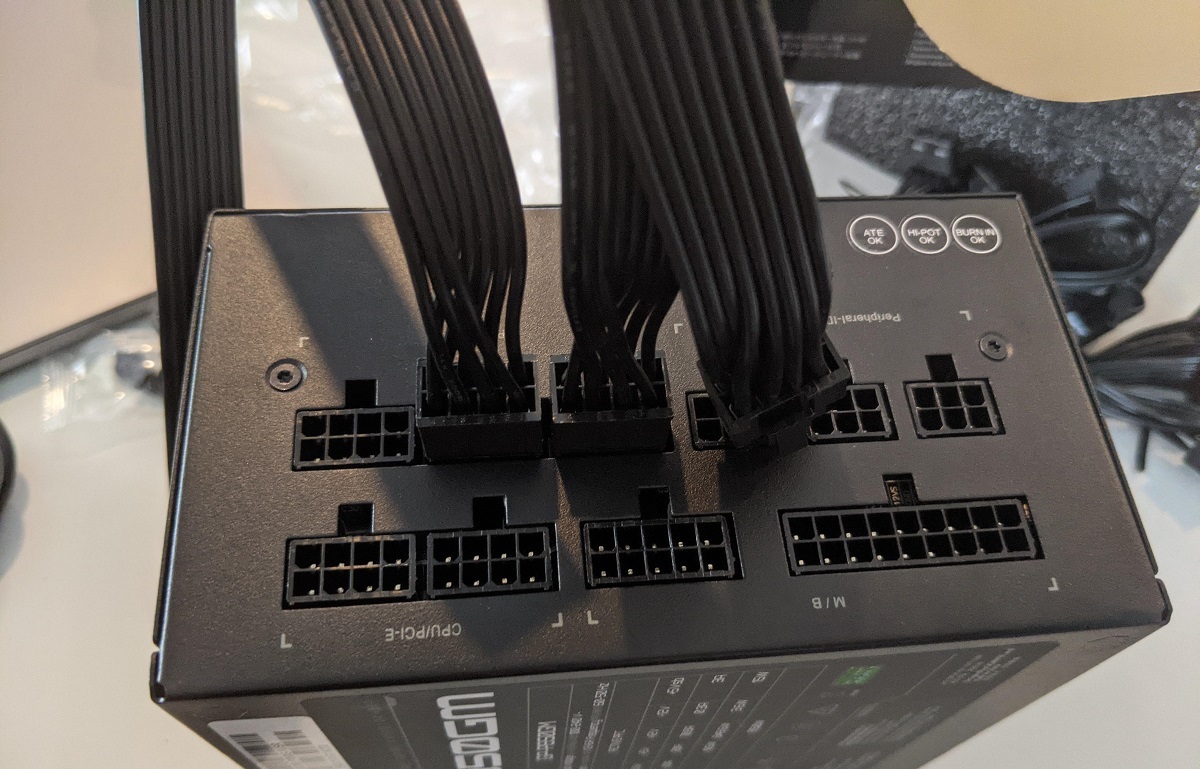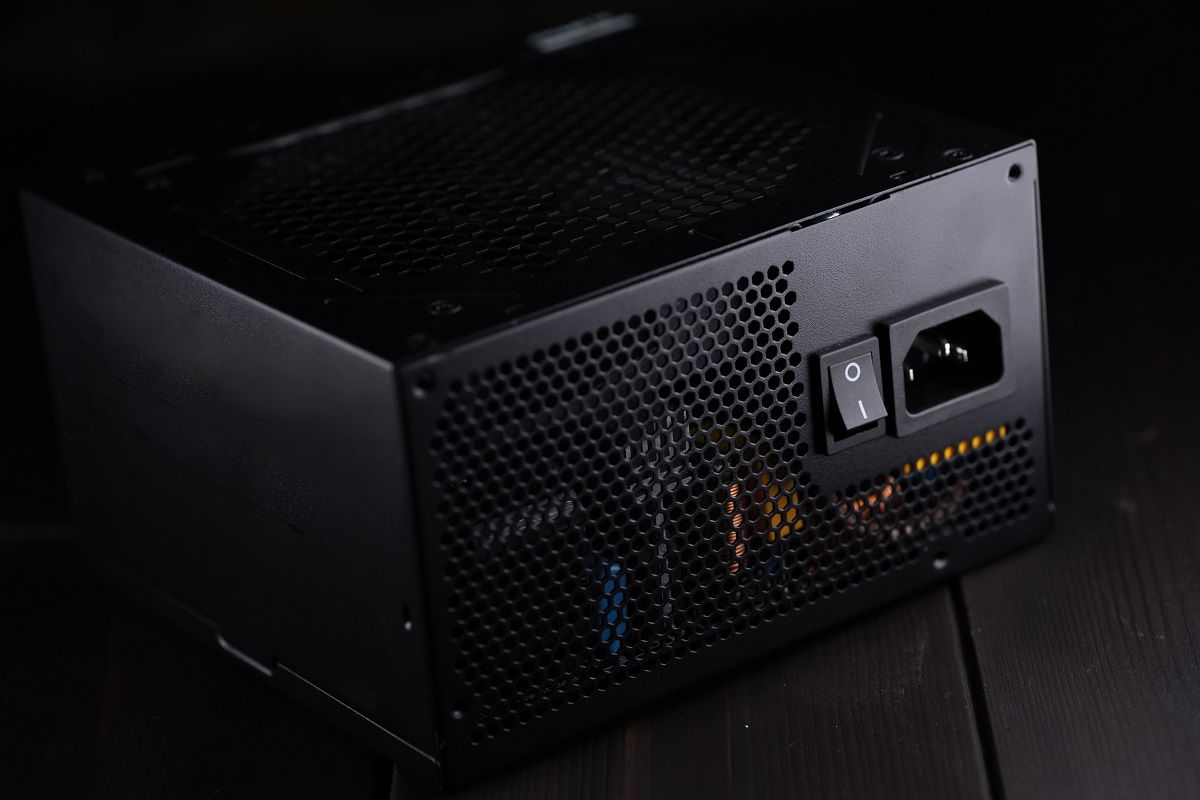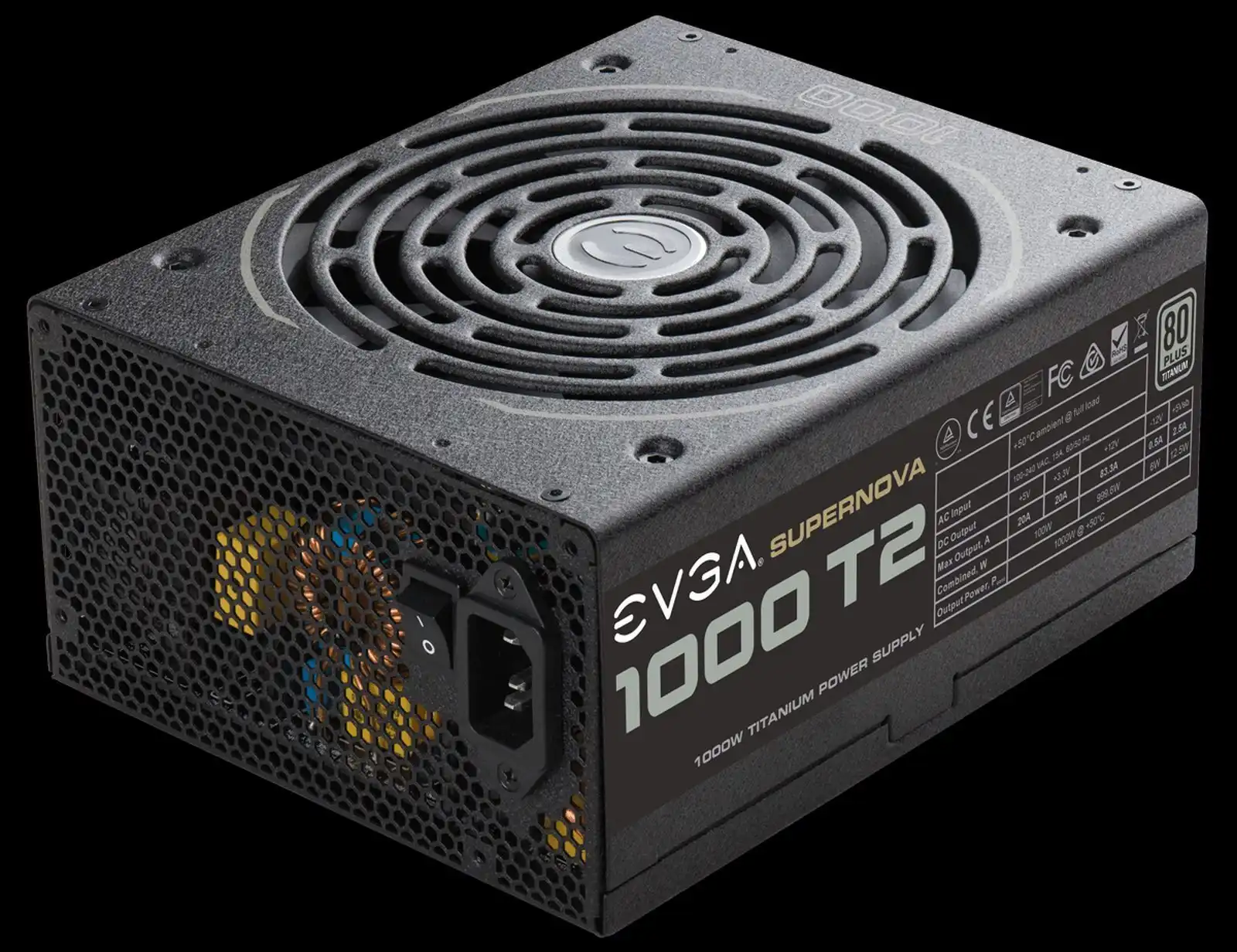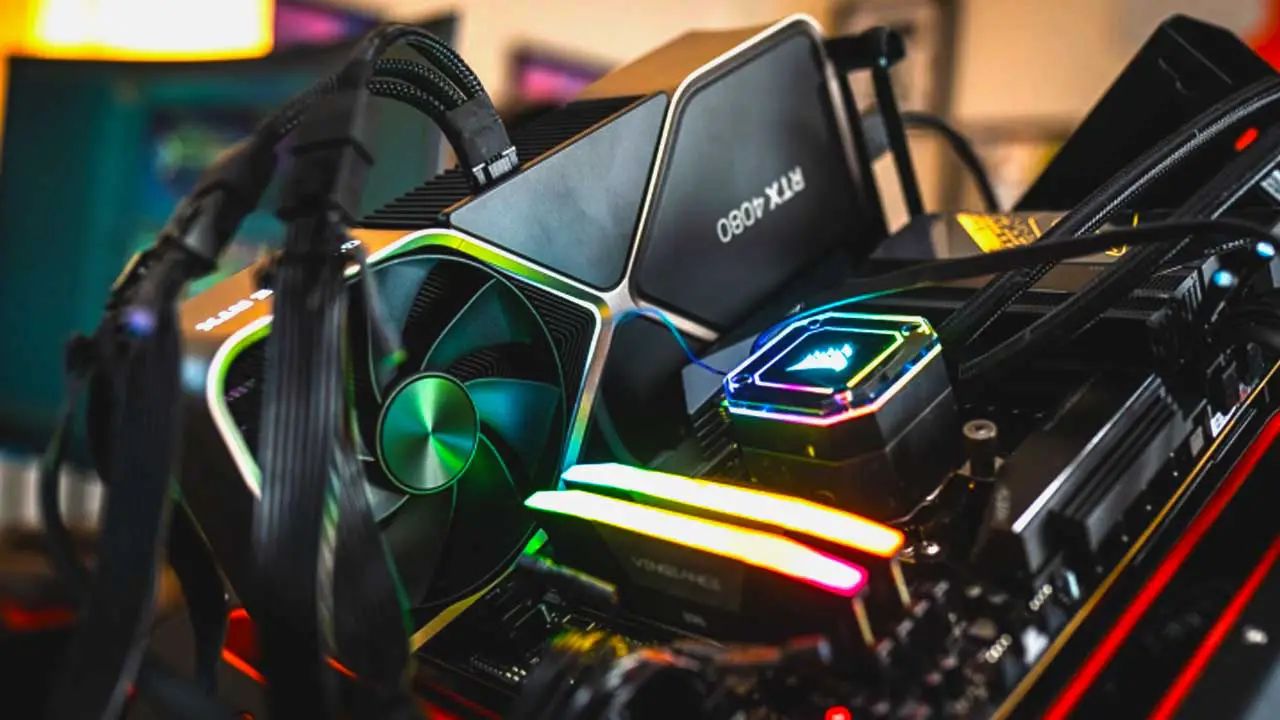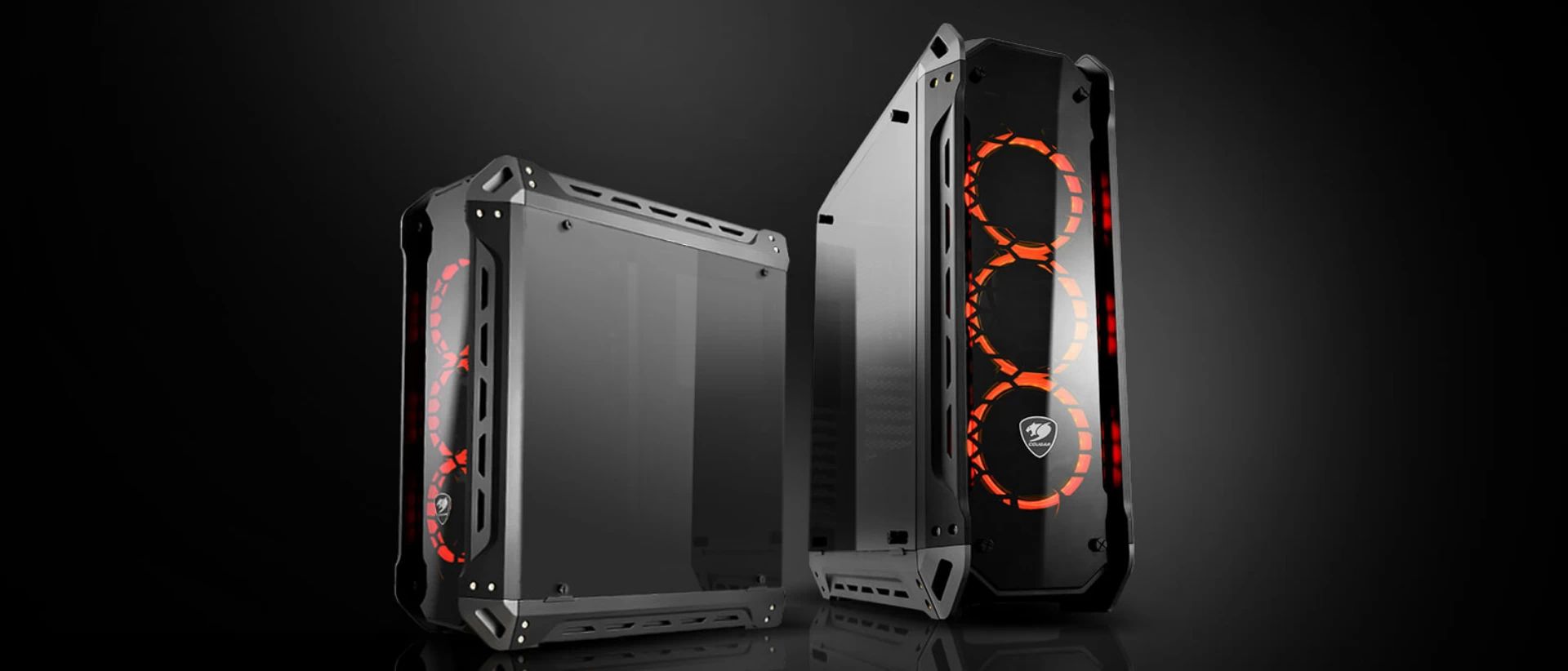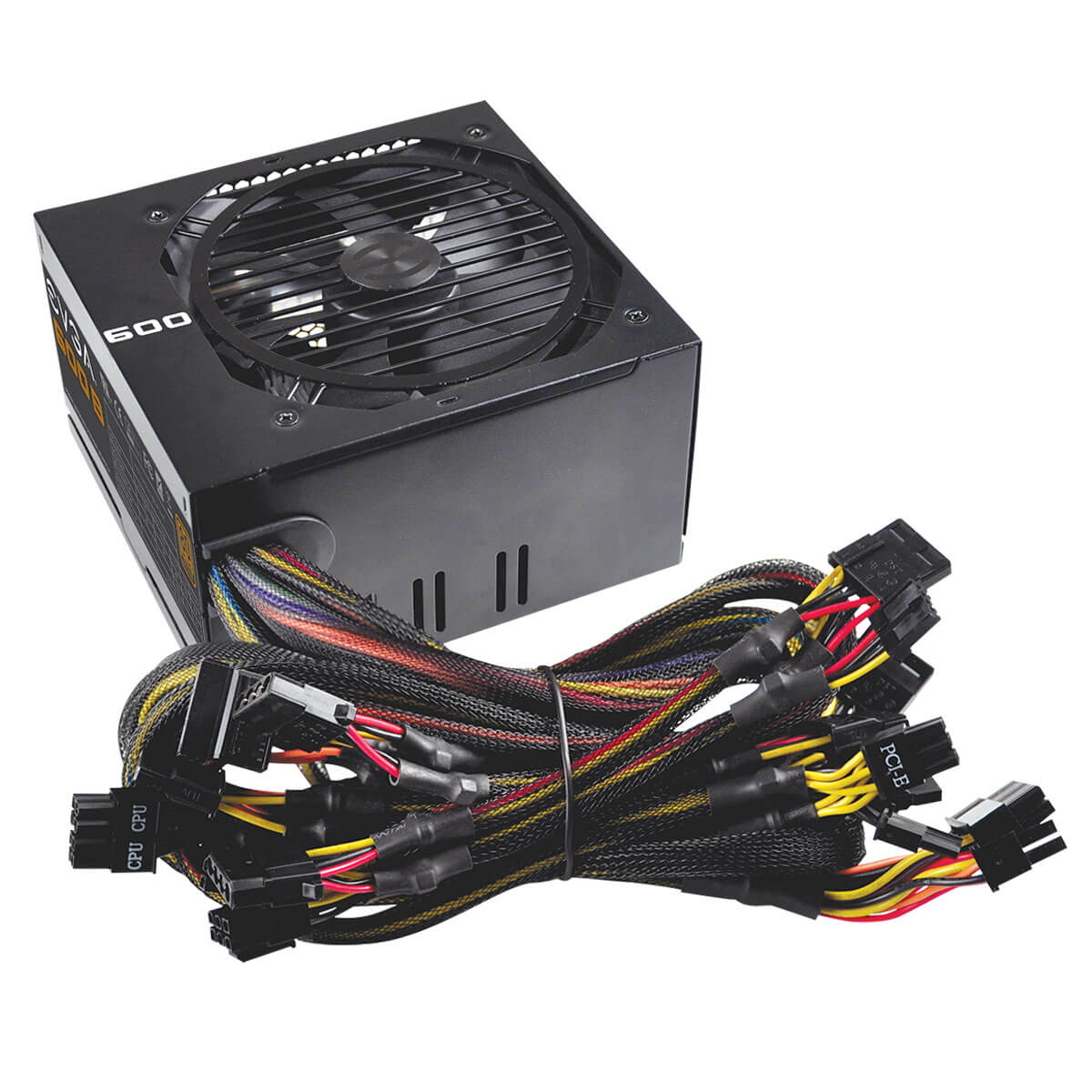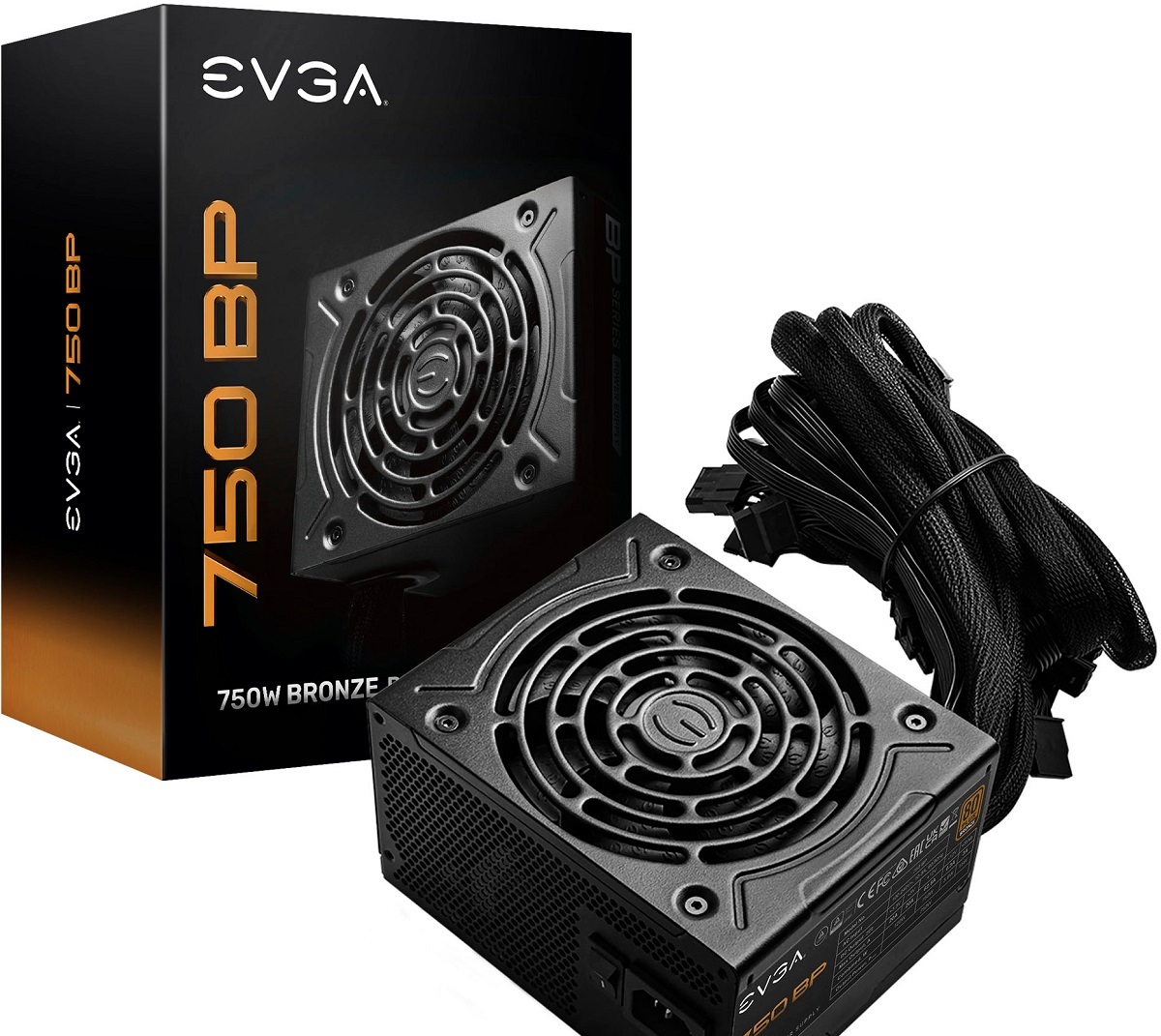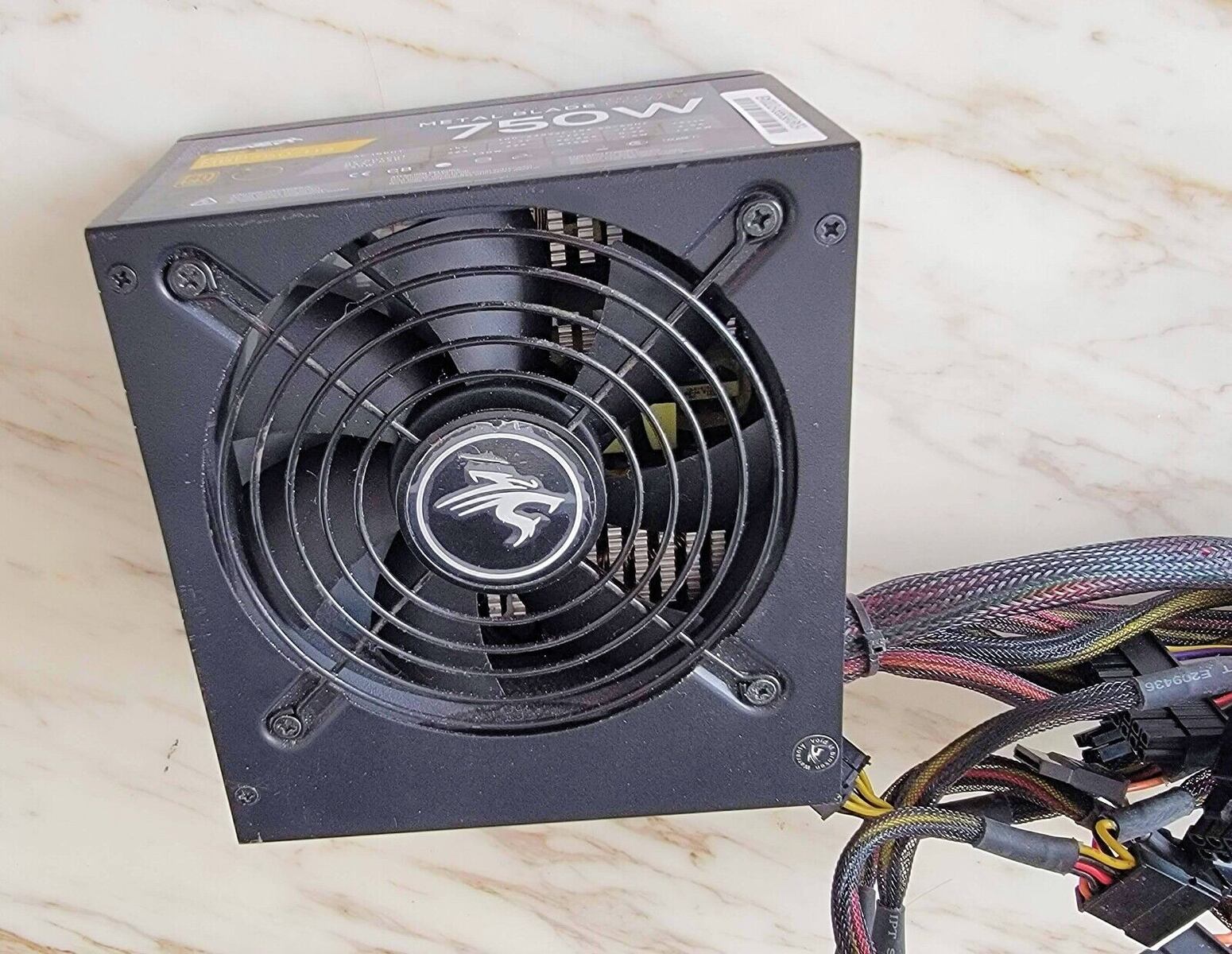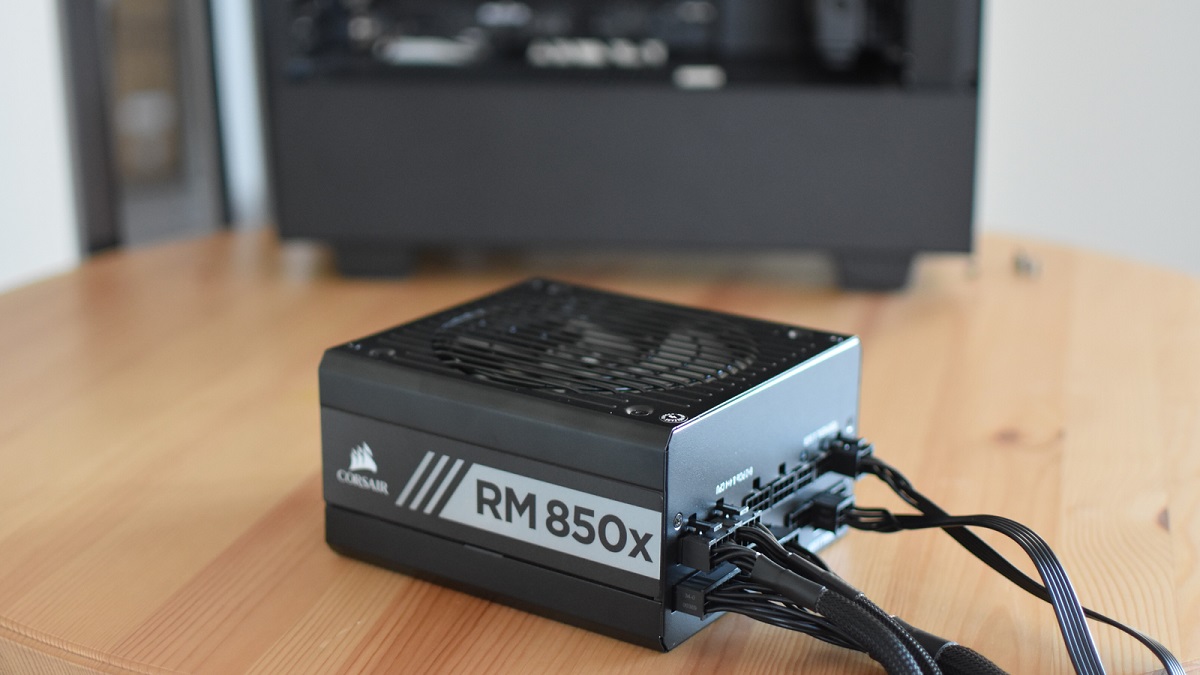Introduction
In today’s technology-driven world, a reliable power supply unit (PSU) is essential for the proper functioning of our electronic devices. Whether you use a computer for work, gaming, or even just browsing the internet, your PSU plays a crucial role in delivering stable and consistent power to all the components inside your machine. However, there may come a time when your PSU is unable to keep up with the increasing power demands of your system.
Knowing whether your PSU is sufficient or not can save you from a multitude of issues such as system crashes, component damage, and overall poor performance. In this article, we will explore the signs that indicate your PSU might not be enough to handle your system’s power requirements. We will also discuss steps you can take to determine if your PSU is the cause of the problem and provide solutions to address the issue.
It’s important to note that insufficient power supply can affect any electronic device, including desktop computers, gaming consoles, and even servers. Therefore, understanding the signs and being proactive in identifying if your PSU needs an upgrade will help you enjoy a smoother and more reliable computing experience.
Signs that your PSU is not enough
When your PSU isn’t able to provide enough power to your system, you may experience several telltale signs. Ignoring these signs can lead to system instability, reduced performance, and potential damage to your components. Here are some signs that indicate your PSU might not be enough:
- Frequent system crashes or reboots: If your system crashes or unexpectedly reboots, it could be a sign that your PSU is struggling to deliver enough power to keep your components running smoothly. These crashes can occur during resource-intensive tasks or even during normal usage.
- Overheating components: Inadequate power supply can cause your system’s components, such as the CPU and graphic card, to work harder and generate more heat. If you notice higher than usual temperatures, frequent overheating, or your cooling fans running at maximum speed, it may be due to an insufficient PSU.
- Unreliable or inconsistent power delivery: A weak PSU may result in inconsistent power output, leading to unexpected shutdowns or random system freezes. You may also notice fluctuations in device performance and responsiveness, indicating a lack of stable power supply to the components.
- Inability to power high-demand components: If you try to upgrade your system with power-hungry components, such as high-end graphics cards or multiple hard drives, and your system struggles to function properly, it may be a sign that your current PSU is unable to meet the increased power requirements.
Experiencing any of these signs is a clear indication that your PSU may not be able to handle the power demands of your system. But how can you determine if your PSU is truly the culprit? In the next section, we will discuss steps you can take to verify if your PSU is the cause of the issues.
Frequent system crashes or reboots
One of the obvious signs that your power supply unit (PSU) may be inadequate for your system is experiencing frequent system crashes or unexpected reboots. These crashes can happen during resource-intensive activities, such as gaming or running demanding software, or even during regular usage. If your computer shuts down abruptly or restarts without any warning, it’s a clear indication that your PSU might not be providing sufficient power.
When your system draws more power than your PSU can handle, it can result in voltage fluctuations or insufficient power delivery to critical components. These power fluctuations can cause your system to become unstable, resulting in crashes or reboots to protect the components from potential damage.
In some cases, the crashes may occur when you attempt to perform certain tasks that put a strain on your system’s power consumption. For example, a system with a weak PSU may crash when you run multiple applications simultaneously or when you launch resource-intensive programs like video editing software or 3D rendering tools.
If you find yourself experiencing frequent system crashes or unexpected reboots, it’s crucial to investigate whether your PSU is the root cause. You can start by checking the wattage of your current PSU and comparing it to the power requirements of your system. If your PSU is below the recommended wattage for your hardware configuration, it’s likely that the crashes are due to an insufficient power supply.
It’s also essential to consider any recent upgrades or additions to your system. If you’ve recently installed new hardware components, such as a more powerful graphics card or additional hard drives, the increased power demands might exceed your PSU’s capabilities.
Moreover, your PSU’s age and overall quality can also contribute to frequent crashes. Over time, PSUs can degrade, and their maximum power output might diminish, leading to instability and system failures.
So, if you’re experiencing regular crashes or unexpected reboots, be sure to check your PSU’s wattage, consider any recent hardware upgrades, and evaluate the age and quality of your PSU to determine if it’s causing the issues.
Overheating components
Overheating components can be a clear indicator that your power supply unit (PSU) is not providing enough power to your system. When your components receive insufficient power, they can start working harder to compensate, leading to increased heat production. This can result in higher component temperatures and potential damage if not addressed.
If you notice that your computer’s components, such as the CPU or graphics card, are running hotter than usual, it’s worth considering whether your PSU is to blame. Heat can cause performance degradation, system instability, and even permanent damage to your valuable hardware.
When the PSU is unable to deliver adequate power to your system, it can cause your components to operate inefficiently, generating more heat. You might notice that your cooling fans are running at maximum speed in an attempt to dissipate the increased heat. Components like the CPU may throttle their performance to prevent overheating, resulting in reduced system performance and slower operation.
If you’ve ruled out other potential causes of overheating, such as improper ventilation or a malfunctioning cooling system, it’s crucial to assess whether your PSU is capable of supplying enough power to meet the demands of your system, especially during high load situations.
Additionally, insufficient power from the PSU can lead to increased power draw from components like the graphics card, which are known to consume a significant amount of power. If your graphics card is not receiving enough power, it may struggle to perform optimally, leading to decreased frame rates, graphics artifacts, or even system crashes during intense gaming sessions or graphic-intensive tasks.
Regularly monitoring your system’s temperatures using software tools and benchmarking utilities can help you identify if overheating is occurring. Keep an eye on the temperatures of critical components, such as the CPU and graphics card, during periods of high system load. If you notice unusually high temperatures that persist even after optimizing your cooling solutions, it may be a sign of an insufficient PSU.
Remember, ensuring that your components operate within their recommended temperature ranges is crucial for their longevity and overall system stability. So, if you notice frequent overheating of your components, it’s worth considering whether your PSU is delivering enough power to maintain ideal operating temperatures.
Unreliable or inconsistent power delivery
A power supply unit (PSU) that is not sufficient for your system’s needs can lead to unreliable and inconsistent power delivery. This can manifest in various ways, such as unexpected shutdowns, random system freezes, or even device malfunctions.
When your PSU is inadequate, it may struggle to provide a stable and consistent power output to the components of your system. This can result in voltage fluctuations, surges, or drops, which can disrupt the proper functioning of your devices and cause system instability.
One common symptom of unreliable power delivery is experiencing unexpected shutdowns. Your system may abruptly turn off without any warning, even when you are not performing any resource-intensive tasks. These sudden shutdowns can occur due to a lack of sufficient power to keep the system running, forcing it to shut down to prevent any potential damage to the components.
Inconsistent power delivery can also manifest as random system freezes, where your computer becomes unresponsive and requires a manual restart. These freezes can happen at any time, regardless of the applications or processes you are running. They are often a result of power fluctuations that interrupt the stable operation of your system.
Furthermore, an inadequate PSU can lead to device malfunctions or errors. You may encounter strange behavior, such as USB devices disconnecting and reconnecting, peripheral devices not functioning properly, or error messages appearing on your screen. These issues can be caused by insufficient power being supplied to the connected devices, rendering them unstable or unusable.
If you notice any of these signs of unreliable or inconsistent power delivery, it is crucial to investigate the root cause. Start by checking your PSU’s specifications, specifically its voltage regulation and ripple suppression capabilities. These specifications indicate how well the PSU can maintain a steady power output without significant fluctuations.
It’s also worth considering the overall quality and age of your PSU. Lower-quality or aging PSUs are more likely to exhibit inconsistent power delivery and may require replacement to ensure reliable performance.
Dealing with unreliable power delivery can be frustrating and potentially damaging to your system. If you experience frequent shutdowns, system freezes, or device malfunctions, it’s important to assess whether your PSU is the cause and take appropriate steps to address the issue.
Inability to power high-demand components
If you attempt to upgrade your system with high-demand components, such as a powerful graphics card or additional storage drives, and your system struggles to function properly, it may be a sign that your current power supply unit (PSU) is unable to meet the increased power requirements.
High-performance components, especially those used for gaming or professional applications, often demand a significant amount of power to operate at their full potential. These components can include high-end graphics cards, multiple storage drives, or even overclocked CPUs. If your PSU does not offer enough wattage or appropriate power connectors for these components, you may experience various issues.
Insufficient power to high-demand components can lead to instability and reduced performance. During times of high power consumption, such as when playing graphically intense games or running resource-intensive applications, your system may lag, experience frame rate drops, or even crash.
Another indicator of an inadequate PSU for high-demand components is the inability to run these components at their optimal settings. For example, if you are unable to maximize the settings on your graphics card or if your storage drives are not functioning at their expected speed, it may be due to insufficient power supply.
It’s essential to consider the power requirements of your chosen components when building or upgrading your system. Graphics cards, for instance, may have specific power specifications that need to be met for them to perform optimally. Failure to meet these requirements can result in underperformance or incompatibility issues.
To determine if your PSU is struggling to power high-demand components, you can assess the wattage rating of your PSU compared to the recommended power requirements of your components. If your PSU falls short, it may be time to consider upgrading to a more powerful unit that can handle the increased power demands.
Keep in mind that upgrading your PSU to accommodate high-demand components not only ensures proper power supply but also contributes to system stability, longevity, and overall performance.
So, if you find that your system is unable to power high-demand components effectively, it’s a strong indication that your PSU may be inadequate. Consider upgrading to a more powerful and compatible PSU to enjoy the full potential of your system’s performance.
Steps to determine if your PSU is the problem
Identifying whether your power supply unit (PSU) is the cause of your system issues requires a systematic approach. By following these steps, you can effectively determine if your PSU is the problem:
- Check your system’s power requirements: Begin by assessing the power requirements of your components. Consult the documentation or specifications of each component, paying particular attention to the recommended wattage. Compare this with the wattage rating of your PSU to ensure it meets the necessary power demands.
- Monitor power usage during demanding tasks: Use software utilities or hardware monitoring tools to track the power consumption of your system during resource-intensive tasks. Observe if the power draw exceeds the capability of your PSU. If the power consumption consistently approaches or surpasses the PSU’s capacity, it is likely underpowered.
- Inspect PSU output specifications: Examine the specifications of your PSU, paying specific attention to voltage regulation and efficiency ratings. If there are significant deviations from the recommended thresholds or if the efficiency rating is low, it may be a sign of an inadequate PSU.
- Use a PSU calculator: PSU calculators are online tools that help estimate the power requirements of your system based on the components you are using. Input the details of your system, including the CPU, graphics card, storage drives, and other peripherals, and the calculator will give you an estimate of the wattage needed. Compare this estimation with your current PSU’s wattage rating to determine if it is sufficient.
By following these steps, you can gather valuable information to determine if your PSU is causing the issues you are experiencing. It’s important to note that addressing PSU-related problems promptly can help prevent further damage and improve overall system stability and performance.
However, if you have confirmed that your PSU is inadequate, it’s time to consider potential solutions, which we will discuss in the next section.
Check your system’s power requirements
An important step in determining if your power supply unit (PSU) is the problem is to assess the power requirements of your system. Each component in your system, such as the CPU, graphics card, and storage drives, has its own power requirements that must be met for optimal performance and stability.
To check your system’s power requirements, start by consulting the documentation or specifications of each component. Look for the recommended wattage or power draw for each device. This information is typically available on the manufacturer’s website or in the product manuals.
Once you have gathered the power requirements for each component, add them together to calculate the total wattage needed for your system. This will give you an idea of the minimum wattage your PSU should have to adequately power your hardware. Keep in mind that the power requirements for certain components, such as high-end graphics cards or overclocked CPUs, can be significantly higher than standard components.
Compare the total wattage needed with the wattage rating of your current PSU. If your PSU has a higher wattage rating than the total power requirements of your system, it is likely that power supply is not the cause of the problem. However, if your PSU has a lower wattage rating than what is needed, it may be underpowered and unable to provide sufficient power to your components.
It’s important to note that while having a PSU with a wattage rating higher than your system’s requirements can provide some headroom, it is not necessary to excessively exceed the power requirements. Oversized PSUs can result in lower efficiency and increased energy consumption, so choosing a PSU that closely matches your system’s power needs is typically recommended.
By checking your system’s power requirements and comparing them to your PSU’s wattage rating, you can gain valuable insights into whether your PSU is sufficient for your system. If your PSU falls short, it may be necessary to consider upgrading to a higher-wattage PSU to ensure stable and reliable power delivery to your components.
Monitor power usage during demanding tasks
Another effective way to determine if your power supply unit (PSU) is the problem is to monitor the power consumption of your system during demanding tasks. Resource-intensive activities like gaming, video editing, or running complex software can put a heavy load on your components and draw more power from the PSU.
To monitor power usage, you can utilize software utilities or hardware monitoring tools that provide real-time data on various aspects of your system, including power consumption. These tools can measure the power draw of your CPU, graphics card, and other components, allowing you to see if it approaches or exceeds the wattage rating of your PSU.
During demanding tasks, observe the power consumption readings and compare them to the wattage rating of your PSU. If you consistently observe that the power draw is pushing the limits or surpassing the capacity of your PSU, it’s an indication that your PSU may be underpowered for your system’s needs.
If your PSU is unable to handle the power demands, it can result in unstable performance, system crashes, or even hardware damage. The PSU may not be delivering sufficient power to meet the requirements of your components, leading to instability and insufficient performance during resource-intensive tasks.
Keep in mind that power consumption can vary depending on the specific task or application you are running. Some applications or games may have higher power requirements than others. Therefore, it’s helpful to monitor power usage across various demanding activities to get a comprehensive understanding of your system’s power needs.
By monitoring power usage during demanding tasks, you can gather valuable data to determine if your PSU is providing adequate power to your components. If the power draw consistently exceeds the capacity of your PSU, it may be necessary to upgrade to a higher-wattage PSU to ensure sufficient and stable power delivery.
Remember that power consumption can be influenced by factors such as overclocking, cooling efficiency, or the number of peripherals connected to your system. Taking these factors into account when monitoring power usage will provide a more accurate assessment of your PSU’s capability to meet your system’s power demands.
Inspect PSU output specifications
Another important step in determining if your power supply unit (PSU) is the problem is to inspect its output specifications. The output specifications of a PSU play a crucial role in the stability and reliability of the power it delivers to your system’s components.
When inspecting PSU output specifications, there are a few key aspects to consider:
- Voltage regulation: The voltage regulation of a PSU refers to its ability to maintain a stable output voltage under varying load conditions. Ideally, a PSU should have good voltage regulation, where the output voltage remains within a certain tolerance of the nominal value (e.g., +/- 5%). If a PSU has poor voltage regulation, it can result in voltage fluctuations that can affect the stability and performance of your components.
- Efficiency rating: PSU efficiency is a measure of how effectively it converts AC power from your outlet to DC power for your system. Higher efficiency ratings, such as 80 Plus Bronze, Silver, Gold, or Platinum, indicate that the PSU wastes less power as heat and delivers more power to your components. A higher efficiency PSU not only reduces power consumption but also runs cooler and more reliably.
- Ripple suppression: Ripple refers to the small fluctuations or noise in the DC output voltage of a PSU. Excessive ripple can lead to instability and potential damage to your components. When inspecting PSU output specifications, look for low ripple values, typically measured in millivolts (mV), to ensure a stable and clean power supply to your system.
Inspecting these output specifications can give you insights into the quality and performance of your PSU. If you find that your PSU has poor voltage regulation, a low efficiency rating, or a high ripple value, it could indicate that the PSU is not providing a stable and reliable power supply to your system.
It’s important to note that some lower-quality or older PSUs may not provide accurate or consistent output as stated in their specifications. In such cases, upgrading to a higher-quality PSU from a reputable manufacturer is often recommended to ensure stable power delivery to your components.
By thoroughly inspecting the output specifications of your PSU, you can assess its capability to deliver clean, stable, and efficient power to your system. If you find any significant issues or discrepancies in the output specifications, it may be time to consider replacing your PSU with a more reliable and suitable model.
Use a PSU calculator
A PSU calculator is a valuable tool that can help you determine the power requirements of your system and assess if your power supply unit (PSU) is adequate. These online calculators consider the specific components in your system and provide an estimate of the recommended wattage for your PSU.
Using a PSU calculator is relatively straightforward. You input the details of your system, including the type and number of components such as the CPU, graphics card, storage drives, RAM, and other peripherals. The calculator then calculates the estimated power requirements based on the power draw and usage patterns of each component.
This estimation takes into account the power requirements for both idle and maximum load scenarios. The PSU calculator considers factors such as the efficiency rating, overclocking, and other variables to provide a more accurate assessment of your system’s power demands.
Once you have inputted all the relevant information, the calculator will give you a recommended wattage range for your PSU. This range indicates the minimum and maximum wattage needed to ensure your system functions properly and is not underpowered.
Comparing the recommended wattage range from the PSU calculator with the wattage rating of your current PSU can help you assess if it is sufficient for your system’s power requirements. If your current PSU falls within or exceeds the recommended range, it is likely that your PSU is suitable for your system.
On the other hand, if the recommended wattage range exceeds the capacity of your current PSU, it may indicate that your PSU is underpowered, potentially causing stability issues and inadequate performance.
It’s important to note that while PSU calculators provide a helpful estimate, they should serve as a starting point rather than an absolute measurement. Factors such as future upgrades, additional peripherals, and system modifications can impact power requirements. It’s recommended to choose a PSU with a wattage rating that provides some headroom for future expansion or upgrades.
By utilizing a PSU calculator, you can gain a better understanding of your system’s power requirements and determine if your current PSU is capable of meeting those needs. If the calculated wattage exceeds your PSU’s capacity, it may be wise to consider upgrading to a higher-wattage PSU to ensure sufficient power supply and maintain system stability.
Solutions for an inadequate PSU
If you have determined that your power supply unit (PSU) is inadequate for your system, there are several solutions to address this issue. These solutions will help ensure that your components receive sufficient power for optimal performance and stability.
- Upgrade your PSU: The most direct solution is to replace your current PSU with a higher-wattage unit that can meet the power demands of your system. Choosing a PSU with a wattage rating that matches or slightly exceeds your system’s requirements will provide ample power for all your components. Ensure to select a PSU from a reputable manufacturer that offers efficient power delivery and reliable performance.
- Optimize your power consumption: Sometimes, optimizing your power consumption can alleviate the strain on your PSU. This can include adjusting power settings in your system’s BIOS or operating system, enabling power-saving features, and disabling unnecessary background processes or applications that consume excessive power. By reducing the overall power draw, you can lessen the burden on your PSU and improve stability.
- Reduce the load on your PSU: If upgrading your PSU is not immediately feasible, you can reduce the load on your existing PSU by removing or replacing power-hungry components. Consider replacing power-hungry graphics cards or hard drives with more efficient alternatives or removing unnecessary peripherals that draw substantial power. This can provide some relief to your PSU while maintaining functionality.
Before implementing any of these solutions, it’s important to consider the specific requirements and limitations of your system. Take into account the power consumption of your components, future upgrade plans, and your budget constraints.
Additionally, ensure that your new PSU is compatible with your system’s form factor and has the necessary power connectors for your components. It’s always advisable to consult the documentation or seek professional assistance when installing or upgrading your PSU to avoid any potential issues.
By finding the appropriate solution for your inadequate PSU, you can ensure stable power delivery to your components, promote optimal performance, and safeguard the longevity of your system. Proper power supply is essential for overall system stability, and addressing an inadequate PSU is a crucial step in ensuring a reliable and efficient computing experience.
Upgrade your PSU
One of the most effective solutions for addressing an inadequate power supply unit (PSU) is to upgrade to a higher-wattage unit that can meet the power demands of your system. By replacing your current PSU, you can ensure that your components receive sufficient power for optimal performance and stability.
When upgrading your PSU, there are a few factors to consider:
- Wattage rating: Calculate the power requirements of your system based on the wattage needs of your components. Choose a PSU with a wattage rating that is equal to or slightly exceeds the calculated power consumption. This will provide enough headroom to accommodate fluctuations in power draw and future upgrades.
- Efficiency rating: Consider selecting a PSU with a higher efficiency rating, such as 80 Plus Bronze, Silver, Gold, or Platinum. PSUs with higher efficiency ratings waste less power as heat, resulting in lower energy consumption and reduced operating costs. Additionally, they tend to run cooler and more reliably.
- Modularity: Modular PSUs offer the convenience of detachable cables, allowing you to connect only the cables you need. This reduces cable clutter and improves airflow within your system, resulting in better cooling and improved overall reliability.
When choosing a new PSU, make sure to select a reputable brand known for producing reliable, high-quality units. Read reviews and consider the warranty offered by the manufacturer to ensure you are making a reliable and long-term investment.
During the installation process, follow the manufacturer’s instructions carefully and ensure that all connections are secure. Improper installation of a PSU can lead to electrical issues, component damage, or even system failures.
Upgrading your PSU to a higher-wattage and more efficient unit will provide your system with the necessary power to meet the demands of resource-intensive tasks and high-performance components. It will help prevent issues such as system crashes, instability, and underperformance.
Keep in mind that upgrading your PSU is not only about addressing the current power needs of your system but also taking into consideration any future upgrades or expansions you may have in mind. Investing in a higher-quality PSU with a suitable wattage will future-proof your system and ensure stable power delivery for years to come.
By upgrading your PSU, you can enhance the reliability and performance of your system, enabling you to enjoy a seamless computing experience without the limitations imposed by an inadequate power supply.
Optimize your power consumption
If upgrading your power supply unit (PSU) is not immediately feasible, you can optimize your power consumption to alleviate the strain on your existing PSU. By reducing the overall power draw of your system, you can improve stability and potentially avoid the need for an immediate PSU upgrade.
Here are some strategies to optimize your power consumption:
- Adjust power settings: Access the power settings in your system’s BIOS or operating system and make adjustments to optimize power usage. For example, you can enable power-saving modes, such as sleep or hibernate, to reduce power consumption when your system is idle. Adjusting display brightness and timeout settings can also contribute to power savings.
- Disable unnecessary background processes and applications: Review the programs and processes running in the background of your system and identify any that consume excessive power. Disable or uninstall unnecessary applications or services that are not essential for your daily usage. This reduction in background power consumption can make a noticeable difference in overall power usage.
- Enable hardware power management: Many components have power management features that allow them to operate more efficiently and conserve power when not in use. Ensure that these features are enabled in your system’s settings. For example, hard drives can be set to enter sleep mode after a certain period of inactivity, reducing power consumption.
- Manage external devices: Disconnect or power off devices that are not in use, such as printers, external hard drives, or USB peripherals. These devices can draw power even when not actively being used, contributing to unnecessary power consumption.
- Optimize cooling: Efficient cooling can help improve overall system performance and reduce power consumption. Ensure that your cooling fans and heatsinks are clean and properly functioning. Maintaining optimal operating temperatures will prevent thermal throttling, where components reduce their performance to avoid overheating, thereby consuming more power.
By implementing these power optimization strategies, you can reduce the strain on your PSU and potentially avoid the need for an immediate upgrade. While these measures may not completely alleviate the need for a new PSU in the long run, they can provide temporary relief and improve overall system stability and performance.
Keep in mind that power optimization requires a balance between reducing power consumption and maintaining the functionality and usability of your system. It’s important not to disable or limit necessary processes or features that are crucial for your day-to-day tasks.
Regularly reassess your power optimization efforts as you upgrade or modify your system to ensure that your power consumption remains optimal. This will help prolong the life of your existing PSU and ensure efficient power utilization throughout your system.
Ultimately, optimizing your power consumption can be an effective interim solution while you plan for a future PSU upgrade or explore other options to meet the power requirements of your system.
Reduce the load on your PSU
If upgrading your power supply unit (PSU) is not currently feasible, another solution to address an inadequate PSU is to reduce the load on it. By removing or replacing power-hungry components and minimizing power consumption, you can alleviate the strain on your existing PSU and potentially avoid stability issues and performance limitations.
Here are a few strategies to consider for reducing the load on your PSU:
- Replace power-hungry components: Identify any power-hungry components in your system, such as high-end graphics cards, multiple storage drives, or other peripherals. Consider replacing them with more efficient alternatives or lower-power variants that can still fulfill your needs. By selecting components with lower power requirements, you can reduce the overall power draw on your PSU.
- Remove unnecessary peripherals: Take inventory of the peripherals connected to your system, such as external hard drives, USB devices, and other accessories. Disconnect or power off any peripherals that are not in regular use. These additional devices draw power from your PSU, and reducing their usage will lighten the load on your PSU.
- Optimize your storage setup: Multiple storage drives, particularly mechanical hard drives, can contribute to increased power consumption. Consider consolidating your data onto a single drive or migrating to more power-efficient storage solutions, such as solid-state drives (SSDs). SSDs consume less power and offer higher performance, reducing the strain on your PSU while improving system responsiveness.
- Minimize overclocking: Overclocking your CPU or graphics card can significantly increase their power requirements. If you have overclocked components, consider reverting them to their stock frequencies. Running components at higher-than-intended clock speeds not only consumes more power but also generates more heat, potentially leading to stability issues.
- Reassess RGB lighting and other power-consuming features: RGB lighting on components and peripherals can contribute to increased power consumption. If you have extensive RGB lighting setups, consider reducing their usage or opting for more energy-efficient lighting options. Additionally, review any other power-consuming features or settings in your system and disable them if they are not essential.
By effectively reducing the load on your PSU, you can ensure that it is operating within its capabilities and prevent potential instability or system failures. Remember that removing power-hungry components or peripherals should be done after considering your needs and ensuring that the removed components or peripherals don’t compromise your desired functionalities.
While reducing the load on your PSU can provide temporary relief, it is important to continue monitoring your system’s power requirements. If your needs change or you plan to upgrade your system in the future, it may still be necessary to consider a PSU upgrade to ensure long-term stability and optimal performance.
Reducing the load on your PSU allows you to make the most of your existing hardware while maintaining a reliable and efficient power supply. It can be an effective solution while you plan for a potential PSU upgrade or explore other alternatives to meet your system’s power demands.
Conclusion
Having a power supply unit (PSU) that can sufficiently meet the power demands of your system is crucial for maintaining stability, performance, and longevity. Inadequate power supply can lead to various issues, including frequent system crashes, overheating components, unreliable power delivery, and the inability to power high-demand components.
To determine if your PSU is the problem, it is important to follow a systematic approach. Start by checking your system’s power requirements and comparing them to the wattage rating of your current PSU. Monitor power usage during demanding tasks, inspect PSU output specifications such as voltage regulation and efficiency rating, and utilize a PSU calculator for accurate power requirement estimation.
If you find that your PSU is not enough, there are several solutions available. Upgrading your PSU to one with a higher wattage and better efficiency can provide reliable power delivery to your system. Optimizing power consumption by adjusting settings, disabling unnecessary processes, and managing external devices can alleviate the strain on your PSU. Additionally, reducing the load on your PSU by replacing power-hungry components or removing unnecessary peripherals can help maintain stability.
Consider the specific power requirements and limitations of your system when evaluating the best solution. Always choose a reputable brand for your PSU and ensure proper installation to avoid potential issues.
In conclusion, addressing an inadequate PSU is crucial for maintaining a stable and efficient system. By assessing your power requirements, understanding the signs of an inadequate PSU, and implementing the appropriate solutions, you can ensure reliable power delivery to your components and enjoy a seamless computing experience.







